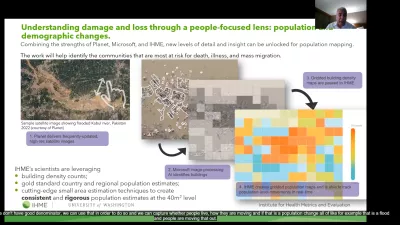Acting on Data
Discover stories from around the world about the people turning IHME evidence into health impact.GBD 2023 Assessment Workshop for Italy
On March 17 and 18, 2025, a two-day workshop dedicated to the assessment of the new estimates from the Global Burden of Disease Study (GBD) for Italy took place in Bologna.
Focus on environments and systems to tackle childhood overweight and obesity
IHME interviewed Dr. Jessica Kerr, an adolescent health researcher at the Murdoch Children’s Research Institute and the lead author of the study focused on children and adolescents.
Suicide prevention efforts are working, new research shows
Around the world, efforts to prevent suicides are working, according to a new study from IHME and colleagues.
How healthy is your state? IHME’s briefings provide insights
When it comes to life expectancy, the US is falling farther and farther behind its peers, according to IHME’s new research.
Why is tuberculosis still a major cause of death? An interview with Dr. Hmwe Hmwe Kyu
Associate Professor Hmwe Hmwe Kyu, PhD, discusses a recently published scientific paper on progress towards the 2020 milestones of the WHO End TB Strategy.
The cost of caregiving is hard to measure. Here’s a way to do it well.
Current methods may be substantially overestimating caregivers’ lost wages.
“Facing a world without antibiotics”: IHME’s findings on antimicrobial resistance featured at Davos
“[Antimicrobial resistance (AMR)] is a huge health challenge,” said Helen E. Clark, the former prime minister of New Zealand, at the January 2024, Davos session, “Bad bugs no drugs: Facing a world without antibiotics.”
The longevity-boosting power of education
We sat down with researcher Claire Henson to discuss a new study on education and longevity.
Five major takeaways on antibiotic-resistant infections in Africa
“[Antimicrobial resistance (AMR)] is really that cross-cutting issue that can bring a stop, or regression, to the progress that we have made when you think about modern medicine,” said Yewande Alimi, AMR/ONE Health Lead at Africa CDC.
Professor Ali H. Mokdad trains health professionals from around the world at CDC event
IHME’s Professor Ali H. Mokdad began his career at the US Centers for Disease Control and Prevention (CDC). This fall, he returned to his roots, giving a presentation about IHME’s work to fellows through the CDC Global Public Health Systems Branch.
Africa CDC and IHME join forces to train health officials
Africa CDC, an independent health agency of the African Union, and IHME joined forces to promote data science and evidence-based decision-making throughout Africa.
On gun violence, the United States is an outlier
When we look exclusively at high-income countries and territories with populations of 10 million or more, the US ranks first for its high levels of gun violence.
Salvando a los niños de las infecciones resistentes a los antibióticos
Una entrevista con la Dra. Gisela Robles Aguilar, la primera autora de un reciente estudio dirigido por IHME sobre la resistencia a los antibióticos en la Región de las Américas de la OMS y una investigadora de la Carga Mundial de Morbilidad en la Universidad de Oxford.
Saving children from antibiotic-resistant infections
An interview with Dr. Gisela Robles Aguilar, the first author of a recent IHME-led study on antibiotic resistance in the WHO Region of the Americas and a Global Burden of Disease researcher at the University of Oxford.
Trevor Noah interviews IHME’s Dr. Emmanuela Gakidou for a new series on AI
Curiosity is the springboard to great discussions. That’s the premise of Trevor Noah’s new YouTube series called The Prompt, where he explores serious topics with probing questions. There are a few laughs along the way, too.













